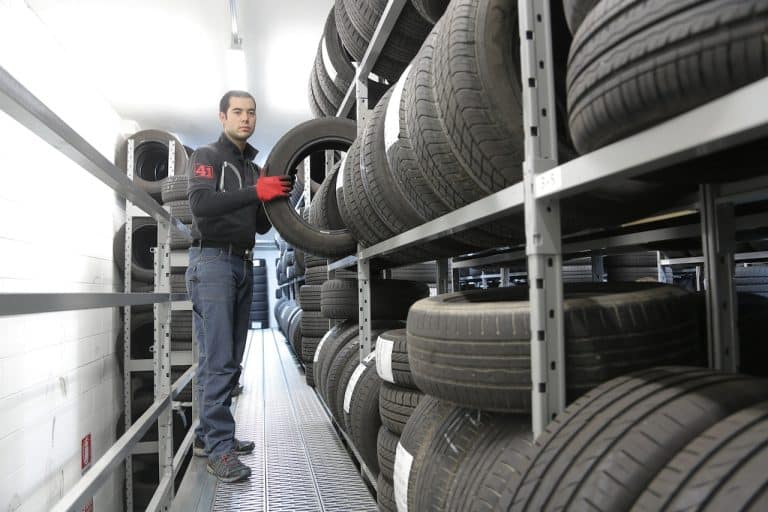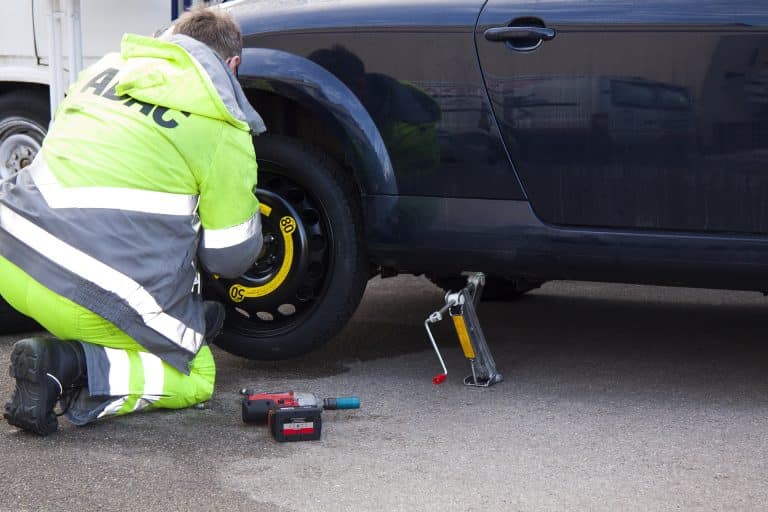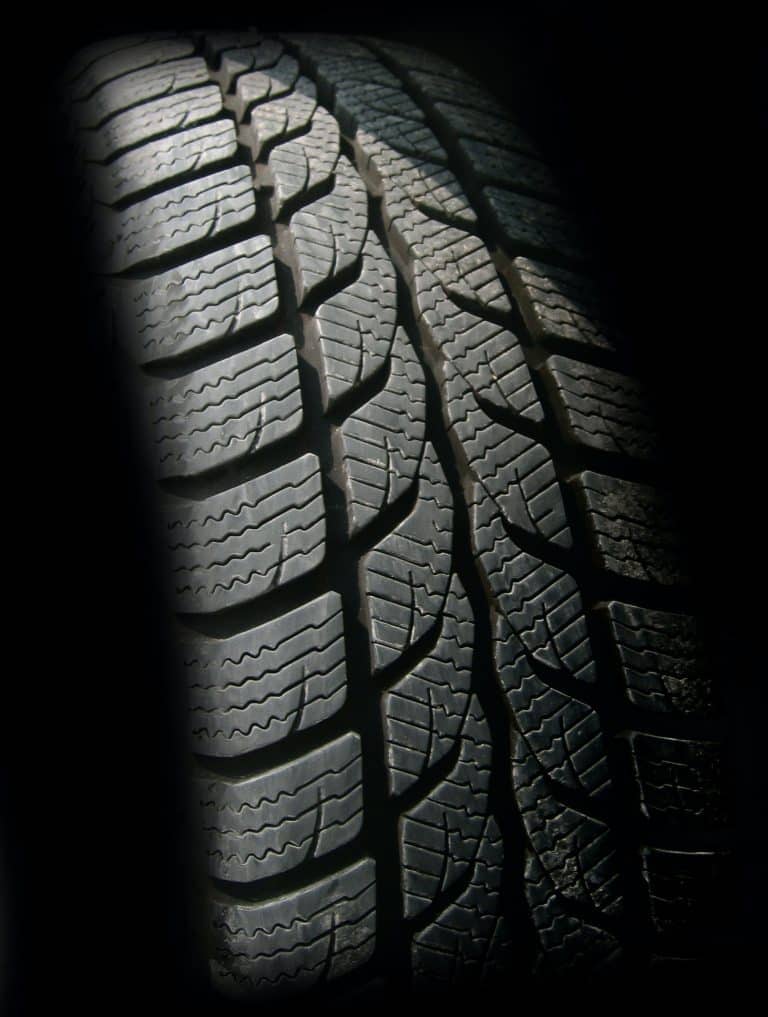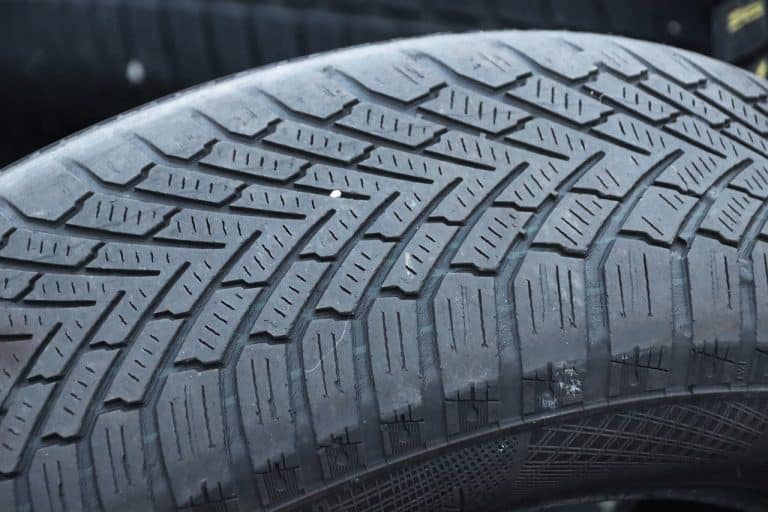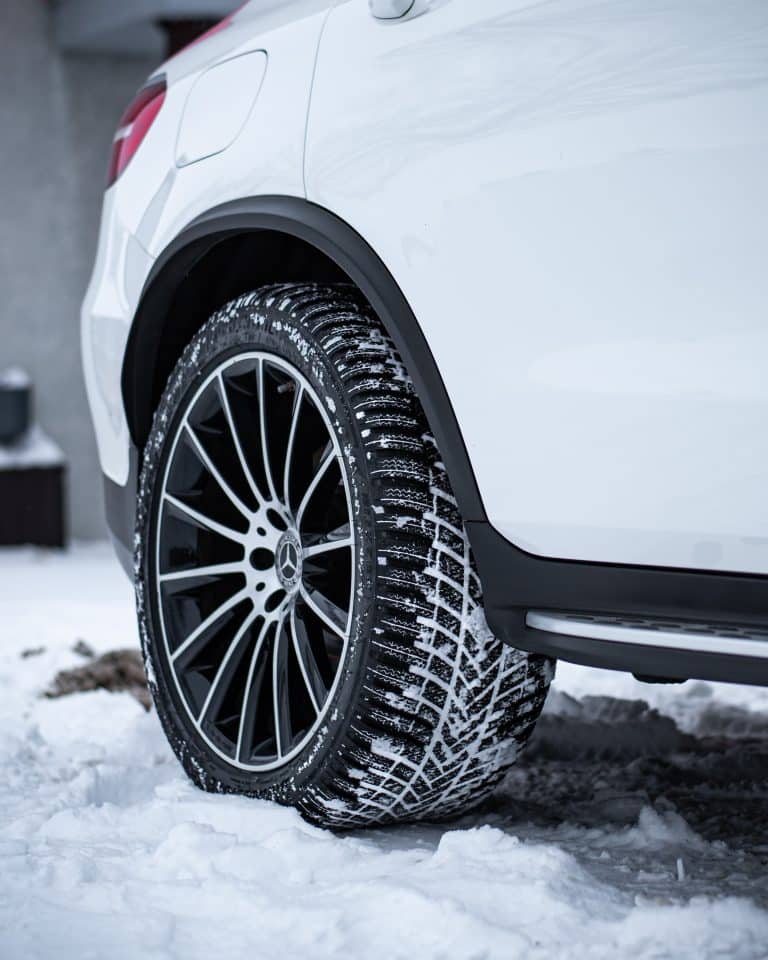Is It True Tires Can Melt Because Of Heat?
Have you ever wondered if the hot summer’s day will literally melt your tires? I know I have. Besides, if you watch motorsports like Formula 1 you know that their tires “bister” or melt. If F1 tires can melt, then surely our normal road tires will too, right?
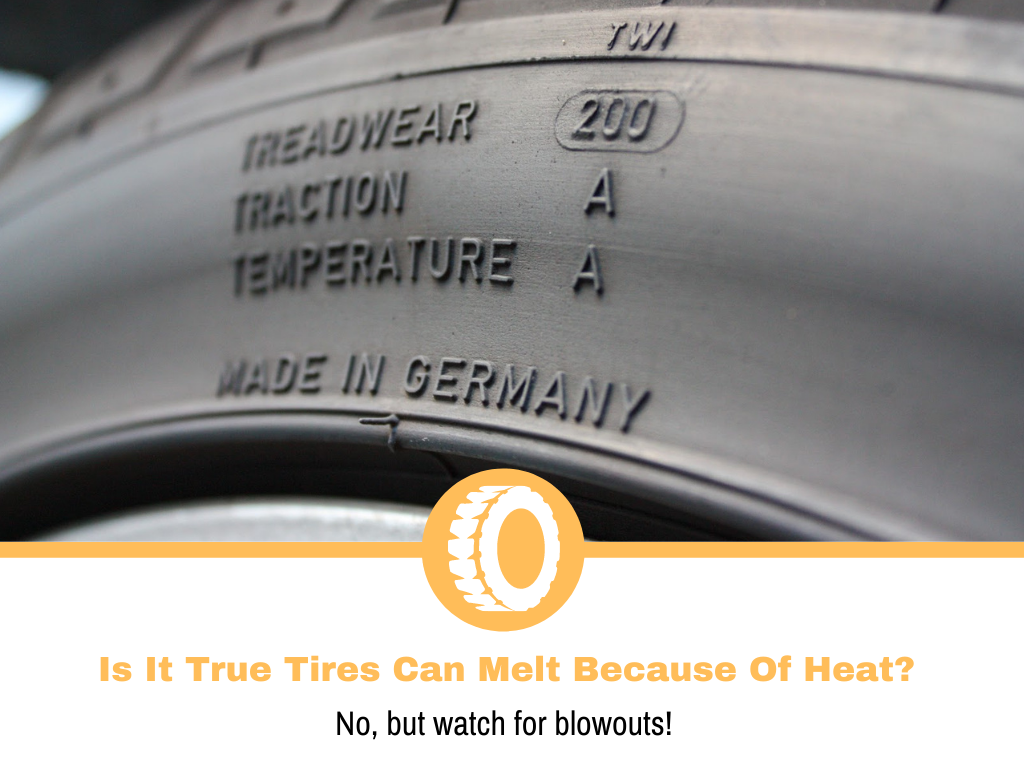
It is a common misconception that tires melt because of heat. It is true that there are a lot more destroyed tires on the side of the road during the summer months, but this is not due to them melting. Tires do have a higher chance to blowout when temperatures soar. The best way to prevent a blowout is to make sure that the tires are inflated to the recommended pressures.
Why Do Tires Not Melt Due to Heat?
If you have ever worked outside in the Arizona sun, then you know that it can get so hot that the rubber of your boot can melt. However, there are millions of vehicles driving every day in Arizona and other hot areas, but their tires don’t seem to melt. This is due to how the rubber is made, in a process called Vulcanization.
In 1839 Charles Goodyear invented vulcanized rubber. He later perfected and patented the process in 1844. Vulcanization of rubber is done by heating and mixing sulfur into the rubber. The sulfur forms a cross-link between rubber polymer chains, thus hardening the rubber and preventing it from melting.
In the case of un-vulcanized rubber or natural rubber, the rubber molecules or polymer chains are not linked. With natural rubber, the polymer chains are mixed and tangled into each other. When natural rubber Is heated, the polymer chains untangle, and the rubber becomes soft and melts.
Because the sulfur is crosslinking the polymer chains, it is impossible for vulcanized rubber to melt. In fact, vulcanized rubber will burn away before it melts. The temperatures to get vulcanized rubber tires to burn are also extremely high at a staggering 750 degrees Fahrenheit (400 Celsius).
Can Heat Cause Tire Blowouts?
Heat can most definitely cause tire blowouts. The main issue that tires face during hot weather is the dreaded blowout. All tires have a temperature grade which signifies how much heat a tire can withstand. These grades are “A,” “B,” and “C.” “A” grade is the hardest tire when it comes to heat resistance and “C” Tires are the least resistant.
So, what tire grade should you use depending on the conditions? Well because we don’t know what the road surface temperature is at all times, tire manufacturers have given the levels of heat resistance to us in MPH to better understand our tires.

As long as the tires are in good condition and not too old, they should be able to keep themselves cool. So why are there still so many more blowouts during the summer months? This all comes down to incorrect tire management.
How Can You Prevent Blowouts During Summer Months?
As with most things mechanical, tires are meant to work under certain conditions. If your engine oil was never changed your engine would surely fail, so why wouldn’t it be the same case for tires? If your tires are not properly maintained, they have a higher chance of failing. The best thing you can do to prevent a blowout, at any temperature, is to keep the air pressure at or near the recommended level.
Though a blowout can happen at any temperature when the tire is underinflated, it is more likely to happen in the heat. As a tire is being used, it is constantly resisting deformation when under acceleration, braking, or turning. This deformation of the tire’s structure creates heat because the tire’s molecules are rubbing against one another.
An underinflated tire will cause even more heat than usual because the tire is less rigid, i.e., less resistant to movement. More movement equals more heat due to friction. When outside temperatures are higher, the rubber becomes a little softer, which also increases the amount of movement, further raising the temperature of the tire.
Once again, the best course of action to prevent tire blowout is to ensure that tire pressures are maintained. It is important to remember that the correct pressure to inflate your tires to is not the pressure listed on the tire itself.
The recommended tire pressure can be found on the door jamb sticker, glove box, or user manual of your vehicle. The PSI number listed on a tire is the maximum pressure that the tire can take. The maximum tire pressure should not be used.
Why Do F1 Tires Blister?
A blister forms on an F1 tire because the layers of material rub against each other, causing heat from friction. This localized heat forms a spot of melted rubber. But If tires burn long before they melt, then why do F1 and other racing tires blister? There are two main reasons for this.
Firstly, the chemical makeup and composition of race tires are completely different from road tires. There is a secret mix between natural rubber, vulcanized rubber, and different kinds of synthetic rubbers from which race tires are made.
Furthermore, F1 tires, along with some other motorsport tires are designed to fail. In the FIA rule book (the governing body for Formula One and other motorsports) it states that the softest tire of a race must only last for around 10% of the total race length. Secondly, F1 tires are subjected to far more extreme loads, speeds, and temperatures than normal road tires.
Conclusion
Your tires will not melt due to heat, however; they may blowout. To prevent your tires from blowing out on you, make sure to maintain proper tire pressure throughout the year. It is recommended that you check your tire pressure about once a month.
Additionally, when you check your tire pressures, you should perform a visual inspection of your tires. Look for any cracks, especially on the sidewalls, check the tread depth and the expiration date on the tire. If you perform all these preventative actions, your chance of a blowout will be dramatically reduced.
